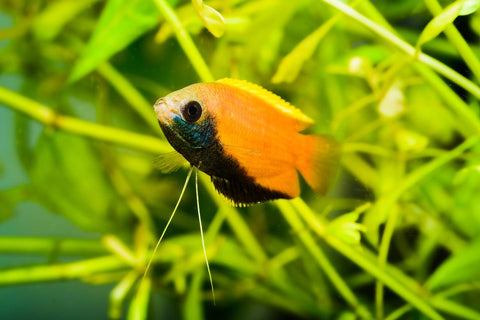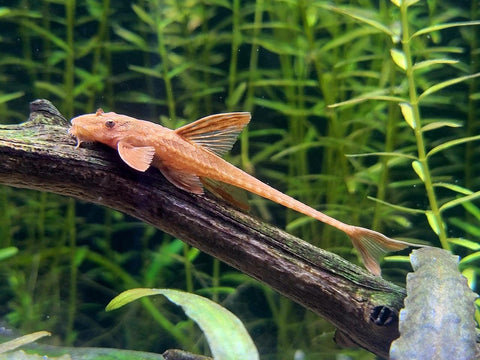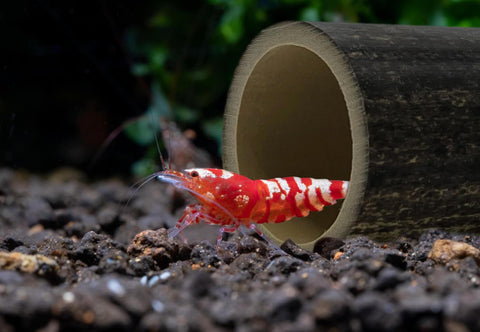The honey gourami, also known as Trichogaster chuna, is a popular and fascinating fish for aquarium enthusiasts. With its magnificent color and interesting behavior, it is an enrichment for any aquarium.
Appearance and behavior
The honey gourami is characterized by its bright yellow body colouring, which is reminiscent of the color of honey. In males, this coloration is more intense and is often accompanied by blue or red accents. The females are somewhat paler in color.
An interesting feature of the honey gourami is its labyrinth organ. This enables it to breathe oxygen from the air, allowing it to survive well even in oxygen-poor waters.
The honey gourami is a peaceful fish that can be socialized well with other peaceful species. However, it is territorial and can be aggressive towards other males. Therefore, only one male honey gourami should be kept per aquarium.
The honey gourami is also known for its interesting courtship behavior. Males build foam nests on the surface of the water to attract females and encourage them to mate.
Keeping and care
When keeping the honey gourami, it is important to provide an aquarium with sufficient space and hiding places. Dense planting with floating plants and roots creates a natural environment and provides a sense of security.
The water temperature should be between 24 and 28 degrees Celsius and the pH value should be slightly acidic to neutral. Regular checks of the water values and a weekly partial water change are recommended to ensure optimum conditions for the honey gourami.
The honey gourami is an omnivore and is happy to eat both dry food and live food, such as mosquito larvae or Artemia. A varied diet is important to ensure optimal health
It is also advisable to offer the honey gourami frozen or fresh vegetables from time to time to enrich its diet. Suitable vegetables include peas, spinach or cucumber.
Breeding
Breeding the honey gourami can be a challenge, but it is possible with the right conditions and a little patience. A separate breeding tank with a temperature of around 28 degrees Celsius and a low water flow is ideal.
The male builds a foam nest on the surface of the water and lures the female there to spawn. After mating, the female lays the eggs in the nest and the male fertilizes them. The male guards the nest and ensures that the eggs are supplied with oxygen.
The incubation period is usually 24 to 48 hours, depending on the temperature. After hatching, the fry should be transferred to a separate rearing tank, as they could otherwise be eaten by the parents.
Diseases and problems
The honey gourami is a relatively robust fish that is rarely affected by diseases as long as the water quality and diet are good. Nevertheless, some problems can occur that you should be aware of
A common disease in honey gouramis is ichthyophthiriosis, also known as white spot disease. Symptoms include small white spots on the fish's body and behavioral changes such as reluctance to eat and sluggishness.
To prevent disease, it is important to keep the aquarium clean and carry out regular water changes. A balanced diet and a stress-free environment also help to strengthen the honey gourami's immune system.
The most important facts summarized once again
The honey gourami is a fascinating fish that is a popular choice for aquarium enthusiasts due to its color and behavior. With the right husbandry, care and breeding, you can enjoy this beautiful fish for a long time.
However, please note that the honey gourami has specific requirements and requires a certain amount of knowledge and experience. Therefore, take the time to thoroughly inform yourself about the needs of this fish before adding it to your aquarium.
With the right preparation and care, you can create a beautiful and harmonious environment in which your honey gourami can thrive.




Comments (0)
There are no comments for this article. Be the first one to leave a message!